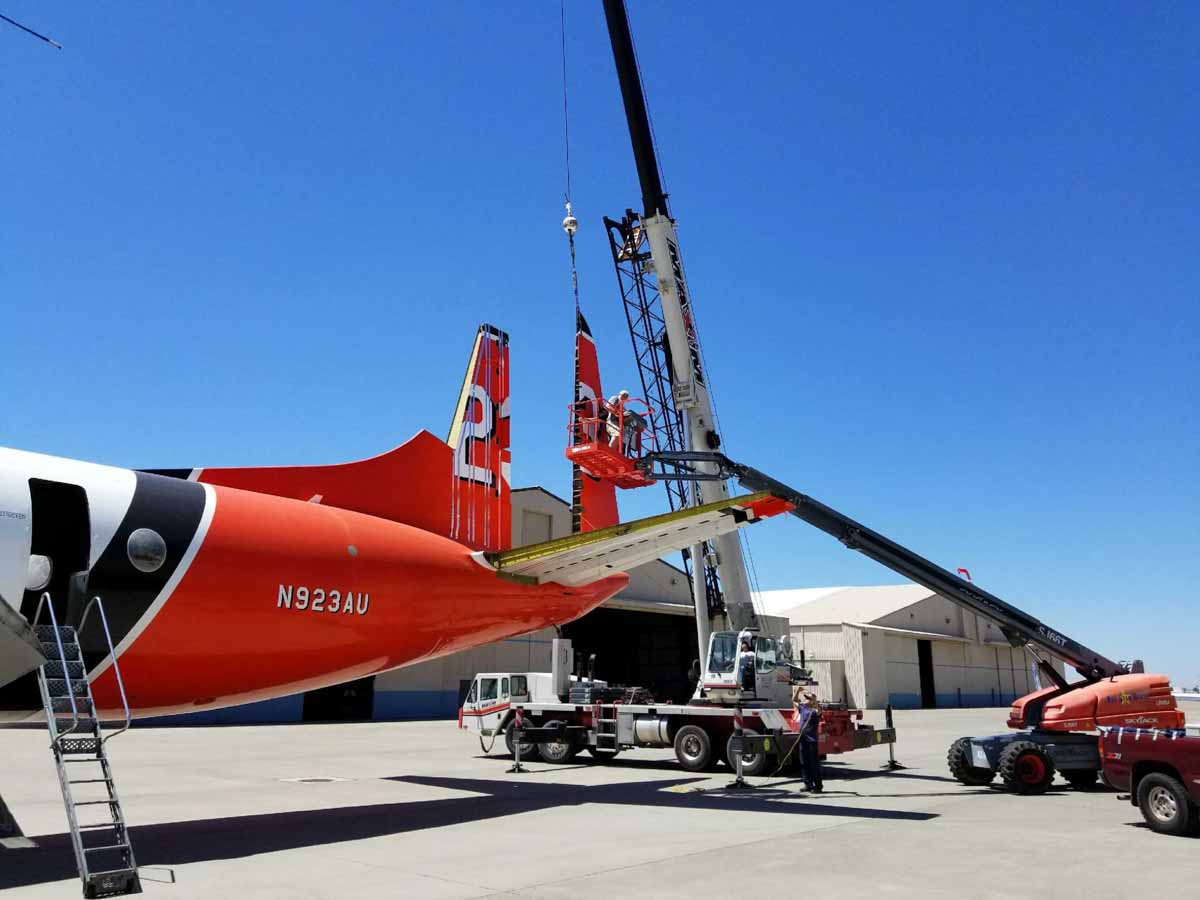Above: Tanker 23 at McClellan Air Field May 17, 2017. Airstrike photo.
(Originally published at FireAviation.com August 8, 2017)
Another one of the P3 Orion air tankers formerly operated by Aero Union has been sold. Tanker 23, N923AU, was purchased by Airstrike Firefighters LLC, a new company with Aero Union roots that was incorporated September 1, 2016. One of the founders of the company is Bill Douglas who is serving as the President. He told us that he worked for Aero Union from 2005 until 2009 where he was an investor and the CFO.

Since May, 2017 Airstrike has been refurbishing Tanker 23 at McClellan Air Field near Sacramento where they are concentrating on inspections and the structural integrity program. Before acquiring the aircraft Mr. Douglas consulted with Avenger Engineering, a company that has had a hand in the development, design, and maintenance of many water and retardant delivery systems and type certificates for firefighting aircraft including the P3. One of their goals is to complete all of the work and inspections that the U.S. Forest Service and the Interagency AirTanker Board requires for contracted air tankers.

Mr. Douglas expects Tanker 23 will be physically ready to fight fires by early to mid-fall of this year. Then, of course, the aircraft and pilots will need to be inspected and carded and it will need a contract. Even though it will have the same constant flow 3,000-gallon RADS II retardant delivery system that it used for years and is the gold standard for air tankers, Airstrike is not sure if it will be required to retake the grid test. Like the owners of the 747 SuperTanker found out, even though the system had been approved before, some of the standards and test procedures have changed in recent years which meant the 747 had to repeat some of the tests or take new ones only recently developed.

In late 2013 the eight Aero Union P3 airtankers were purchased by a company that primarily deals in supplying and overhauling spare parts for aircraft. United Aeronautical Corporation (UAC), headquartered in North Hollywood, California, bought the aircraft from Comerica Bank which acquired Aero Union’s assets following the company’s financial problems.
Of the eight P3’s UAC acquired, one was sold to Buffalo Airways, T-20 is in Tucson and may or may not be scrapped, T-21 is also in Tucson and is designated as scrapped, and Airstrike bought one, leaving UAC with an inventory of five. Mr. Douglas said he is in discussions with UAC about the possibility of purchasing the remaining fleet.


At the time of the Aero Union bankruptcy Tanker 20 was in Canada in the middle of heavy maintenance, partially disassembled. Then when the company lost their USFS contract in 2011 and later went bankrupt, that process stopped and it sat there for a while until UAC had it shipped on a truck as a wide load from Halifax to Tucson. There has been talk about converting it to a simulator.
We have reached out to Buffalo Airways a few times since they bought their P3 in 2014, but owner Joe McBryan, the “Ice Pilot” reality show star, has not been willing to disclose to us the status of Tanker 22.

The P3’s that are now owned by UAC were manufactured between 1962 and 1965 and have less than 20,000 hours, according to Bradford Beck, the President and COO of the company.






